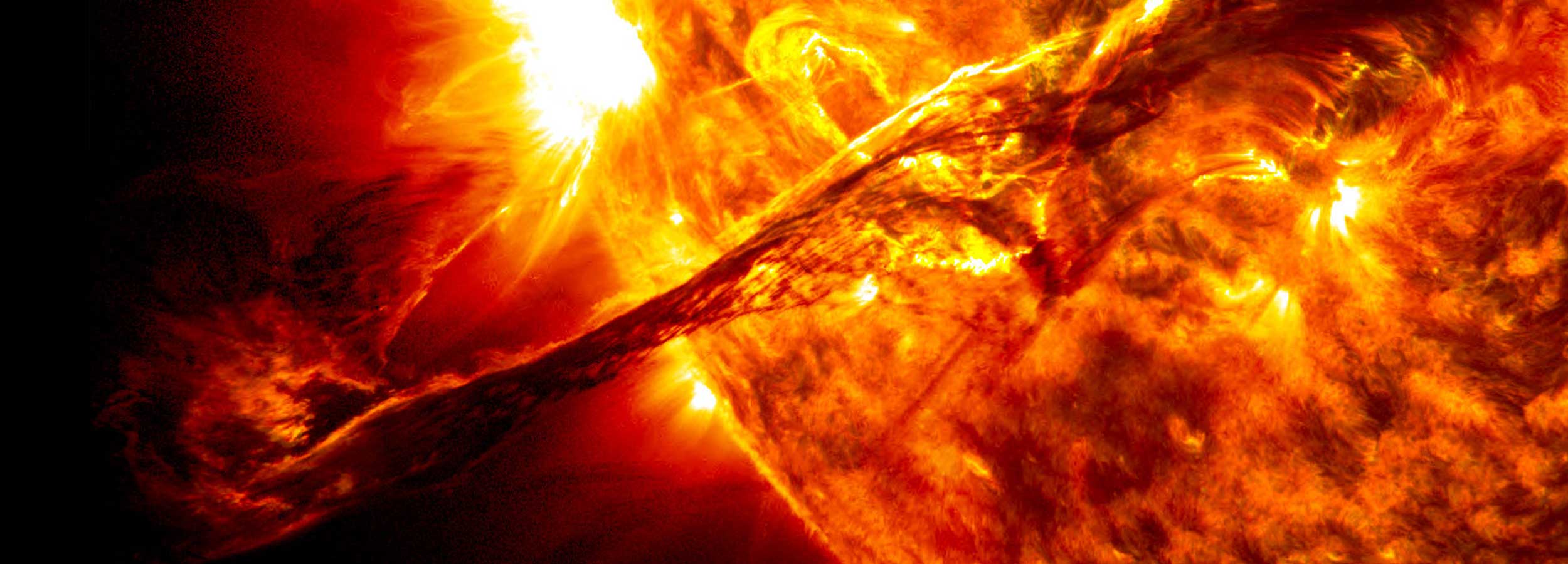
OBSERVING THE SUN
Observing the Sun
Observing the Sun can provide a fun way to partake in the science/hobby of astronomy during the daytime. However, you must be aware that serious and permanent injury can occur if you do not take the proper precautions to ensure your safety. If you are not careful, you can permanently damage your vision by observing the Sun through a telescope. Do you remember lighting dry leaves on fire as a kid by using a magnifying glass to intensify the Sun’s light? Well, the Sun can have a more permanent and damaging effect on your eyeball if you do not exercise extreme care!Relatively speaking, the Sun is close to the Earth. Therefore, it can reward the viewer with a fair amount of detail without a telescope. You will, however, need to use some sort of filter before looking at the Sun. Typically, a piece of No. 14 arcwelder’s glass is used. This material can usually be found at any welding-supply store. Please note, that this material will give the Sun a bluish-greenish color.

Solar Filter (click to zoom)
If you have a larger budget, you may want to consider buying a solar telescope. Coronado Telescopes makes a personal solar telescope for about $500. This scope is designed for views of the Sun, right out of the box.
Generally speaking, when it comes to astronomy, it is better to have a larger telescope. But, when it comes to Solar astronomy, this is not necessarily the case. You don’t need a large aperture scope because there is never a problem with gathering light from the Sun. In fact, the Sun is so bright, you have to use filters to reduce the light! However, resolution is an important factor—but, daytime viewing conditions are usually not stable enough to permit the resolution of even a 4-inch telescope. So, use what you’ve got. It will probably be sufficient (just be sure to use a proper filter).
The Spotted Sun

Click to Zoom
Sunspots are believed to be cooler regions of the Sun’s surface that scientists think are caused by intense localized magnetic fields. The most basic sunspots look like small dark areas, but some can be very large and dramatic. Many sunspots can have remarkable changes within a matter of hours.
A lot of astronomers find it quite rewarding to make sketches of the sunspots that they see over time. In this way, they can record the changes of the appearance of the sunspot, and also keep a record of their observations.
The Solar Cycle

Click to Zoom
ADDRESS:
4th Day Alliance
1908 E Osceola Pkwy #222
Kissimmee, FL 34743
(689) 888-7944
4th Day Alliance
1908 E Osceola Pkwy #222
Kissimmee, FL 34743
(689) 888-7944

